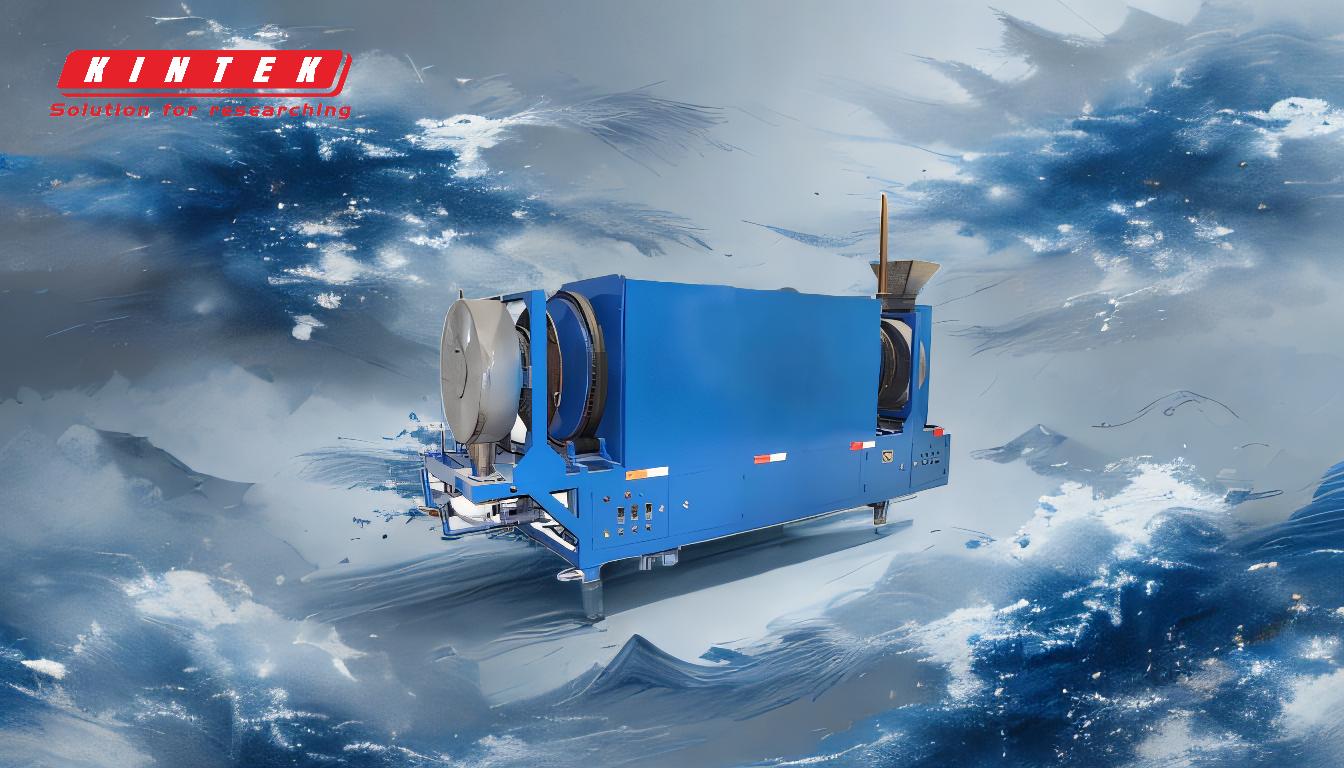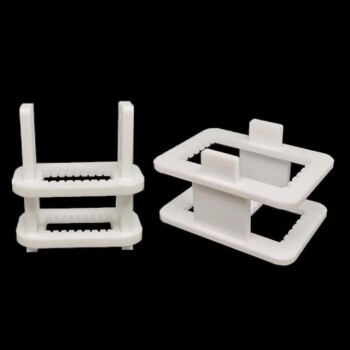The primary advantage of tire pyrolysis is its ability to transform a problematic and bulky waste stream—end-of-life tires—into valuable, marketable commodities. This process deconstructs tires in a high-temperature, oxygen-free environment, recovering fuel oil, recovered carbon black (rCB), steel, and combustible gas, thereby creating economic value from what would otherwise be landfill-bound waste.
Tire pyrolysis is not merely a waste disposal method; it is a resource recovery technology. Its core benefit lies in creating a circular economy for tires, turning an environmental liability into a source of energy and raw materials, reducing our reliance on virgin resources.
From Environmental Liability to Economic Asset
The true power of tire pyrolysis is its ability to reverse the waste equation. Instead of costing money and space to landfill, waste tires become a feedstock for producing valuable industrial materials.
Diverting Waste from Landfills
End-of-life tires are a significant environmental challenge. They are non-biodegradable, consume vast amounts of landfill space, and can pose a fire risk or become breeding grounds for pests.
Pyrolysis offers a definitive solution by completely breaking down the tire material, eliminating the need for landfilling and mitigating the associated environmental hazards.
Recovering Valuable Raw Materials
A tire is a complex composite of valuable materials. Pyrolysis is unique in its ability to separate and recover these components in a usable form.
The main outputs are:
- Pyrolysis Oil (TPO): A synthetic fuel oil that can be used in industrial furnaces, boilers, or generators. It serves as a direct alternative to conventional fossil fuels.
- Recovered Carbon Black (rCB): A solid material that can be refined and reused as a reinforcing agent in new rubber products, plastics, pigments, and inks. This reduces the need for energy-intensive virgin carbon black production.
- Reclaimed Steel Wire: The steel belts and beads from the tires are recovered as clean, high-quality scrap metal, which can be easily recycled by the steel industry.
- Syngas (Uncondensable Gas): A mixture of combustible gases produced during the process. This gas is typically captured and used to power the pyrolysis reactor itself, making the operation partially self-sustaining.
Operational and Strategic Advantages
Beyond the environmental and product benefits, tire pyrolysis offers distinct operational strengths that make it a practical and scalable technology.
Energy Efficiency and Self-Sufficiency
As mentioned, the process generates its own fuel source in the form of syngas. By routing this gas back to the reactor's burners, a pyrolysis plant can significantly reduce its external energy consumption and lower its operational costs.
Scalability and Decentralization
Pyrolysis reactors can be built at various scales, from large, centralized industrial plants to smaller, even mobile, units.
This flexibility allows facilities to be built close to the source of waste tires, drastically cutting down on the transportation costs associated with moving bulky, low-density materials over long distances.
Reduction in Greenhouse Gas Emissions
Compared to the alternatives, pyrolysis presents a favorable emissions profile. It avoids the uncontrolled release of pollutants from tire fires and the methane emissions from landfills.
Furthermore, by producing recycled materials like rCB and steel, it offsets the significant carbon footprint associated with manufacturing those materials from virgin resources.
Understanding the Trade-offs and Challenges
While highly advantageous, tire pyrolysis is not without its complexities. A clear-eyed view of its limitations is essential for successful implementation.
Product Quality and Consistency
The quality of the pyrolysis oil and recovered carbon black can vary based on the type of tires used (feedstock) and the precise control of process parameters like temperature and heating rate.
Achieving a consistent, high-grade output that meets market specifications requires sophisticated technology and operational expertise. Inconsistent quality can impact the market value and applications of the end products.
Economic Viability
The profitability of a tire pyrolysis plant is directly tied to the fluctuating market prices for fuel oil, scrap steel, and carbon black. A successful business model depends on securing a low-cost or free supply of waste tires and operating in a region where the end products command a stable price.
Environmental and Regulatory Hurdles
Although a closed-loop system, a pyrolysis plant is still an industrial facility that produces emissions and requires strict environmental permits. Managing air quality, water discharge, and the handling of byproducts is critical for regulatory compliance and responsible operation.
Making the Right Choice for Your Goal
Tire pyrolysis is a powerful tool, but its suitability depends on your specific objective.
- If your primary focus is waste management and environmental impact: Pyrolysis is an excellent solution, offering a definitive and environmentally superior alternative to landfilling or incineration.
- If your primary focus is creating high-value industrial products: Success is possible but requires investment in advanced process controls to ensure the recovered carbon black and oil meet demanding market specifications.
- If your primary focus is energy production: The technology is highly effective for converting tire waste into a usable fuel oil and process heat, especially in scenarios with abundant, low-cost tire feedstock.
Ultimately, tire pyrolysis provides a pragmatic and effective pathway to address the global challenge of tire waste while simultaneously recovering valuable resources.
Summary Table:
| Advantage | Key Benefit |
|---|---|
| Waste Diversion | Eliminates landfilling of bulky, non-biodegradable tires. |
| Resource Recovery | Produces marketable oil, carbon black (rCB), steel, and syngas. |
| Energy Efficiency | Syngas byproduct fuels the reactor, reducing external energy needs. |
| Scalability | Plants can be built at various scales, close to tire sources. |
| Emissions Reduction | Offsets carbon footprint from virgin material production. |
Ready to transform your tire waste into profit and sustainability?
KINTEK specializes in advanced lab equipment and consumables for analyzing and optimizing pyrolysis processes. Whether you are researching feedstock, testing product quality, or scaling up your operation, our precise instruments help you maximize recovery rates and ensure consistent, high-value outputs.
Let KINTEK be your partner in building a circular economy. Our solutions are designed to meet the rigorous demands of laboratory and pilot-scale pyrolysis projects, helping you validate your process and achieve operational excellence.
Contact our experts today to discuss how our equipment can support your tire pyrolysis goals.
Related Products
- Customizable Laboratory High Temperature High Pressure Reactors for Diverse Scientific Applications
- Inclined Rotary Plasma Enhanced Chemical Vapor Deposition PECVD Equipment Tube Furnace Machine
- Small Lab Rubber Calendering Machine
- Laboratory Hybrid Tissue Grinding Mill
- Laboratory High Throughput Tissue Grinding Mill Grinder
People Also Ask
- What is a high pressure reactor? Your Guide to Safe, High-Yield Chemical Reactions
- What is a high pressure autoclave? A Complete Guide to High-Temp, High-Pressure Reactors
- How is high pressure generated in an autoclave? Unlock the Science of Sterilization & Synthesis
- Is pressure reactor a laboratory apparatus? A Key Tool for High-Pressure Chemical Reactions
- What is the effect of pressure on graphene? Unlock Tunable Strength and Electronics




















